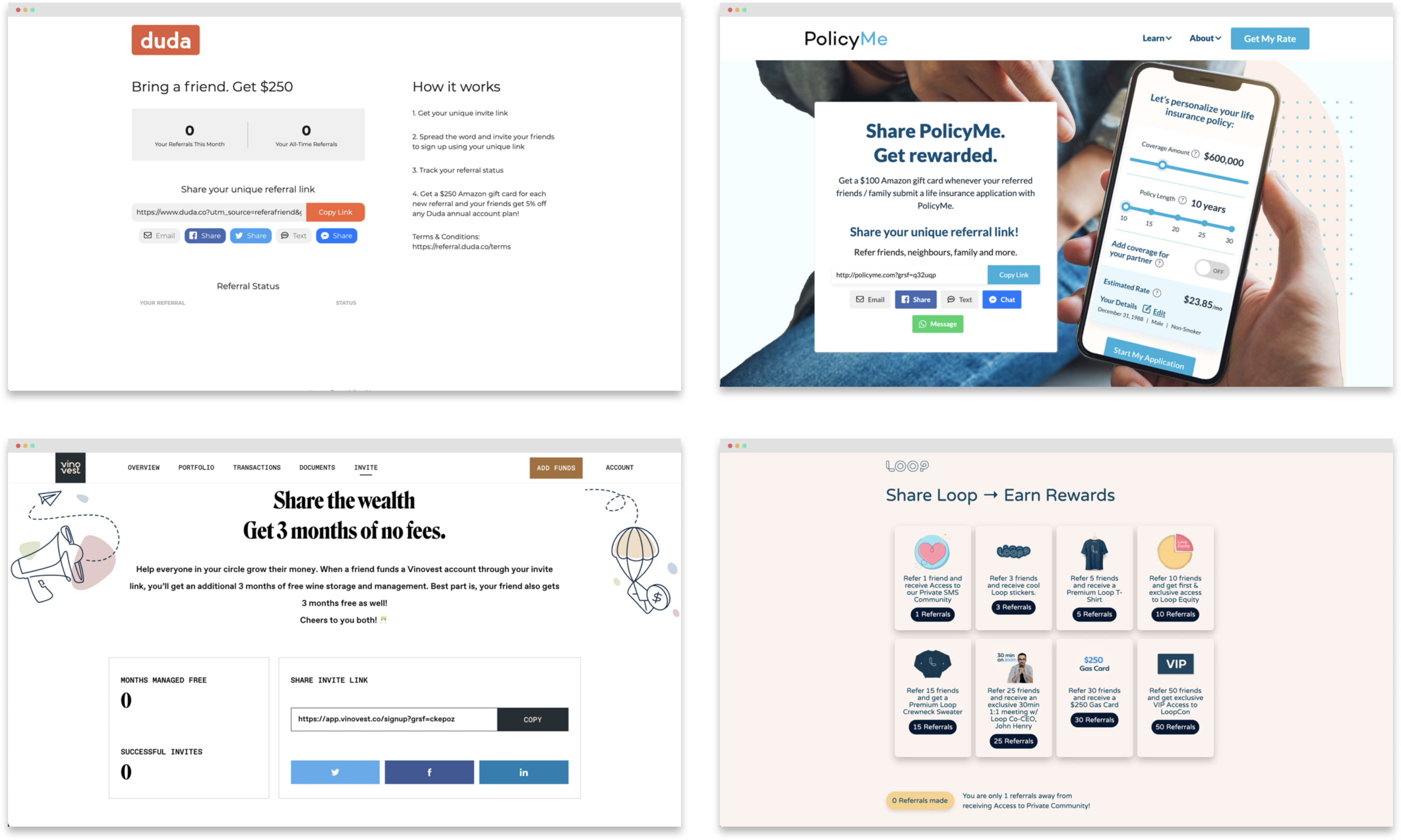For any business looking to achieve a high level of growth, increasing customer loyalty should be high on the agenda. Customers who have already taken the step to work with or purchase from you are far more likely to purchase again versus a cold prospect.
Taking the appropriate steps to not only increase but facilitate the opportunity for customer loyalty is something that should be worked into every business. After all, who doesn’t love a customer who is loyal to their business. A customer who takes the time to recommend your services. Or a customer who makes referrals. That’s a customer worth making the effort for.
What is word of mouth marketing?
Word of mouth marketing links intrinsically to customer loyalty. But first, what is word of mouth marketing? Word of mouth marketing, or WOMM for short, aims to get your customer base (those in a positive mindset about your business) talking about you to their friends, colleagues, family, anyone who will listen.

They are, effectively, spreading the word about you and your business, and doing some of your marketing for you. WOMM takes many forms, from a simple word in the bar to a social media post, a review posted online to a recommendation in an email. The overall hope is WOMM gets your name out there and creates something of a buzz about your business.
The Impact of Increasing Customer Loyalty
There are 3 core impacts that increasing customer loyalty will have on your business. Spoiler alert, each of them is positive:
Create Brand Ambassadors
Brand evangelists are those customers who have bought into your brand so much that they live and breathe it. They tell everyone they meet just how great your brand is. They’ll recommend it at any given opportunity. They are your marketing gold dust. These brand evangelists might be harder to come by than your average customer but when you find them you’ll want to make the most of their enthusiasm.
This is where the creation of brand ambassadors comes into play. Brand ambassadors follow a very similar concept to the natural brand evangelist but with an important part. The role is formalized. Your business, in exchange for their ongoing enthusiasm, support and referrals, will give them certain incentives. This could be as simple as branded merchandise, but could just as easily be reduced rates or even free offers.
It should also be noted that brand ambassadors don’t have to have been a customer already. They can be created through outreach to influencers. Whilst you’ll likely pay for this marketing (through cash or through freebies) it can be a great way of driving more loyal customers your direction.
Increase LTV (Lifetime Value)
A loyal customer will come back to your brand and purchase time and time again, this will naturally drive up the revenue that your business makes from that one customer. This leads to an increase in that customer’s lifetime value. It has been found that customers that come back to a business for a second time (and beyond) tend to spend considerably more. This could be down to an increase in the level of trust that the customer has with the brand following a successful and positive purchase.

Sparks Word of Mouth
Word of mouth marketing links naturally to customer loyalty. It makes sense that the more loyal people are to your business the more likely they are to talk about your business in a positive light. Therefore, increasing your customer loyalty will lead to an increase in word of mouth referrals. And word of mouth referrals are among the easiest to convert, and are most likely to become loyal customers themselves.
Nurturing #CustomerLoyalty has game-changing effects on growth:
— Chris Tweten 🍁 (@ctwtn) September 1, 2021
🚀 Creates brand ambassadors
🚀 Increases LTV
🚀 Sparks #WordOfMouth
In this 🧵, I’ll cover 10 ways to increase customer loyalty 👇
Customer Loyalty vs. Customer Retention
There is a case to be made that a loyal customer is, by definition, a retained customer but the two types do have varied definitions that should be considered individually. This is especially true when it comes to measuring the two using metrics.
Customer loyalty could be classified as the next step on from customer retention. This is because you’re not simply measuring whether or not the customer is continuing to purchase from you but you are also measuring just how satisfied they are with your product or service, and your brand as a whole. You will also measure how likely they are to recommend your brand to another person.

Taking a measurement of customer loyalty means that you can find out the truth behind the repeated purchases. It provides evidence that you are, genuinely, providing a great service, rather than just a necessary one. Your product might be being bought repeatedly, but that could be because it doesn’t last long. By measuring loyalty you can be sure that you have satisfied customers.
Retaining customers is the first step in this process towards fostering loyalty. Every business should have a retention marketing strategy that aims to keep customers returning time and time again. After all, a retaining customer is a far more affordable option than finding a new one from scratch.
10 Ways to Improve Customer Loyalty
It’s clear that customer loyalty is a facet to your business that is worth nurturing. Thankfully there are a number of ways which you can develop in order to further improve customer loyalty.
Offer Better Customer Service
Making the effort with customer service goes a long way, and customers who feel that they have been well looked after are far more likely to become loyal customers in the future. After all, everyone likes to feel that they are special and, even more so, that their relationship is valued.
This doesn’t necessarily mean that you need a horde of customer service agents sitting waiting by the phone or keyboard ready to pounce on customer issues (although a short wait time goes a long way!). For those working in the B2B SaaS sector, it has become an expectation that your product or service will have a dedicated customer self-help platform. Most of the time these are dedicated subdomains (usually something like help.domain or https://docs.growsurf.com/). These platforms allow customers to feel like they’re not at your mercy and that they could help themselves.
Highlight Case Studies
Case studies are a great way to connect with customers throughout the whole sales process. They should be used right from the start as a way of showing potential customers just what they are about to experience if they choose to work with you.
These case studies should then be used to the benefit of both sides of the transaction to see whether the product or service that you are offering is the right fit for both parties. There is no shame in telling a prospect that, in fact, you aren’t the right business for them, if anything this massively breeds trust and can lead to future referrals.
Case studies work best when they’re told as stories. Don’t simply share what you did, share how you did it, why you did it, what the customer’s thoughts were and go into some depth. These will not only make for more compelling reading but will become useful tools for the company.
The easier it is for a potential customer to put themselves in the shoes of an existing, successful customer, the more likely they are to be converted.
Set Expectations and Exceed Them
Your customers should know what to expect throughout their buying journey. At every step along the way they should know what’s happening and also what’s coming next. This means that you, as a business, are naturally held to account and will have to stick to your word but it also provides an opportunity for you to exceed expectations.

If you are regularly seen to be going above and beyond what is expected from you, customers will be more likely to have a positive experience, and therefore become a loyal customer. Setting expectations also works both ways, some customers might expect you to be able to deliver a service tomorrow or next week, if that isn’t realistic you should set a more achievable expectation. If you can then exceed that expectation, all the better.
Use Reciprocity
Reciprocity, as coined by Dr Robert Cialdini as the Reciprocity Principle, focuses on the feeling that if someone does something for you, you naturally feel that you owe them. We’re not saying that you should make your customers feel guilty and that they are forced to be tied to you. Instead, by offering them something so that they feel gently indebted to you means that they will, naturally, want to reciprocate the favor.
This could be as simple as sharing extra information for free (such as a detailed and value filled blog on your website), taking another step to help them if they’re stuck, offering advice for free, even just giving them a warm feeling. As the reciprocity principle states that they’ll want to return they will become a more loyal customer.
Launch a Loyalty Program
The big supermarkets and superstores are the kings and queens of loyalty programs. They work through incentives, where if a customer spends more with you they might bank points or achieve extra discounts. The programs also work as a sort of badge of honor. They might even enhance the customer experience, such as self-scanners only being available to those with loyalty cards.
Before blindly launching into a loyalty program it is worth taking time and assessing whether a loyalty program is the right fit for your company. It might be that a referral program would work better. They serve similar purposes but have slightly different outcomes. Loyalty programs focus on the individual customer and retaining them over a longer period of time. A referral program aims to both retain the current customer whilst also encouraging them to bring in new customers.
If you want to take your customer loyalty program seriously, we highly suggest looking into loyalty program software to make management and scaling easier.
Build your customer referral program without the dev time
Sign up for a free trial of GrowSurf to lower your customer acquisition costs, increase customer loyalty, and save gobs of time.

Ask for Customer Feedback and Implement Suggestions
It is easy to ask for customer feedback, it’s as simple as a quick customer survey. It is far more work, but well worth the effort, to implement the suggestions that customers give. This shouldn’t be done blindly and should be used to influence your company direction, rather than doctorate but customer feedback often shows issues and notes that you might not have previously considered.

Customers feel especially valued when they see that their feedback has been read, noted and acted on. The best examples of companies showing that they have taken on feedback is to create simple “We listened…” pieces of content. Let customers know that, following the recent survey, the business is going to implement a, b and c. Then, importantly, thank the customers for their feedback. This process increases customer worth and leads to increased loyalty.
Create a Communication Roadmap
Communication roadmaps let customers know when to expect to hear from you. These are at their most important during development and delivery stages. People don’t like to feel that they’re unsure what is coming next, if companies provide a clear calendar of communication then customers know when to expect an announcement from you.
These roadmaps also help customers travel through their customer journey with you rather than falling off and going elsewhere. You might even take it to another level by offering certain rewards based on milestones, such as a 1 year anniversary, but be sure to communicate this in advance. Then customers can actively look forward to this happening.
Run Retargeting Ads
Getting retargeting ads right isn’t all that straightforward. Many people don’t like the slightly creepy way that the moment that they have searched for something they are relentlessly targeted by companies. Rather, there are better ways to retarget in order to increase customer loyalty rather than push hard sales.
Make use of proper customer segmentation to retarget customers at various points of the buying process and customer journey. For example, you might choose to retarget a customer a month after their purchase to remind them to claim a discount code or a reward. You might even retarget them with a simple direction towards a helpful resource on your website. These types of touch points offer value to the customer rather than spamming them and pushing additional sales on them.
Say Thank You
Arguably the simplest but often overlooked method of increasing customer loyalty. Make sure to say thank you to customers for their loyalty and their custom. Whenever a customer interacts with the business it should be mandatory for the business to thank them. It might be that it is simply said, it can be even more effective when something is offered as a way of thanking them. This is how referral programs with incentives offered as a way of thanks are so effective.
SaaS based companies should be sure to have a well-designed and effective thank you page on their website which customers are directed to following making a purchase. Your thank you page could even include some gentle CTAs such as asking for a social share or include a customer satisfaction survey.

Invest in Customer Service Tools
In order to achieve customer service excellence, you’ll need the tools to make the process simple. Sitting waiting for phone calls or emails isn’t going to create a great customer experience. There are many tools out there that help make offering great customer service a far more simple affair.
When running a referral program, and aiming to increase customer loyalty, consider running integrations such as HubSpot, into your customer service setup. These will allow you to create dedicated customer accounts, run a ticketing system, look over customer history and investigate more detailed metrics which may help you spot opportunities or issues before they naturally arise.
How to Measure Customer Loyalty
Embarking on a campaign to increase customer loyalty is only worth it if you are planning to measure the change in loyalty or the impact that it has over time. There are 3 core metrics to measure:
Net Promoter Score
Net Promoter Score tracks how likely customers are to refer new customers towards your business. They answer a simple question, “How likely are you to recommend our business to friends and family?” with a scale 1-10 applied. If a customer scores 1 then they are not likely at all to recommend your business and 10 being extremely likely to do so.
Customers are then segmented into 3 core groups, detractors, passives and promoters. Those scoring 1-6 are deemed to be detractors. Detractors are people who are not promoting your business and possibly doing the opposite. They are certainly not recommending your business to others. Ideally this number would be as low as possible.
The middle group are those scoring a 7-8. They are known as passive and are likely not doing anything positive or negative with regards to promoting your business to others in their network. They may continue to use your services going forward but don’t find it is worth talking about.
The group where a business wants to see the largest clusters are those scoring 9-10, they are known as promoters. This group is actively promoting your business to others and is likely to be making ongoing referrals of others to your business.
When it comes to action your most lucrative user segment are the promoters. They are those who you can easily target to turn into a set of brand ambassadors and increase your referral campaign. The passive group can be targeted using some customer loyalty increasing techniques and should be the focus of your efforts to turn them from scoring a 7 or 8, into a 9 or 10.
Detractors could present an issue for your business but also an opportunity. Whilst you might not like what they say they are a group you should approach for more detailed feedback. Chances are they will be able to show you the holes or errors within your current working model.
In order to actually get your Net Promoter Score you need to complete a small calculation. Take the percentage of promoters within your customer base and subtract the percentage of detractors (ignoring the passives). The answer will be your net promoter score. This gives you a trackable metric moving forwards.
Taking the time to track this score over time allows you to focus on customer service and individual elements to improve customer loyalty. You’re also able to better understand the needs of customers on a more granular level.
Customer Lifetime Value
The key to measuring lifetime value in a broader, trackable metric is to take an average of all customers. Looking on an individual basis is interesting but taking it as an average metric that is regularly tracked allows you to see if there is an improving trend that, therefore, shows an improvement in customer loyalty. The more loyal the customer, the more likely they are to spend, thus increasing their lifetime value.
In order to calculate the lifetime value of a typical customer you need to know your average sale value, the average number of times that purchase is made a year and the average customer lifespan.
If your business is a subscription based business where a typical monthly subscription costs $129. Paying monthly gives you $1548 a year. Looking at your average lifespan you can see that most customers are with you for 2.5 years. Meaning that the average customer lifetime value is $3870. Now that we know the average lifetime value of an average customer you’re able to get far more granular. Are referral customers more likely to stay with you for longer and increase their LTV? Are those with a low NPS showing a lower LTV?

Customer Engagement Score
Scoring customers based on metrics such as time spent engaging on your platform, how frequently they visit your website or how often they complete core actions such as logging in or completing tasks. Generally speaking, the higher your customer engagement, the more likely that customer is to be a loyal customer. This metric can be improved with a focus on customer service, an easy to use platform and increasing the perceived value that the customer feels.
Key Takeaways
Increasing customer loyalty is an absolute must for any business looking to grow, it can be easily overlooked but creating a loyal customer base is the first step towards a larger, happier more engaged set of users who will eventually do your marketing for you.
- Word of mouth marketing is a huge asset to your business, do what you can to facilitate it.
- Increased customer loyalty leads to more retained customers and increased customer lifetime value.
- Tracking customer loyalty metrics allows you to see trends and improvement
Build your customer referral program without the dev time
Sign up for a free trial of GrowSurf to lower your customer acquisition costs, increase customer loyalty, and save gobs of time.

















